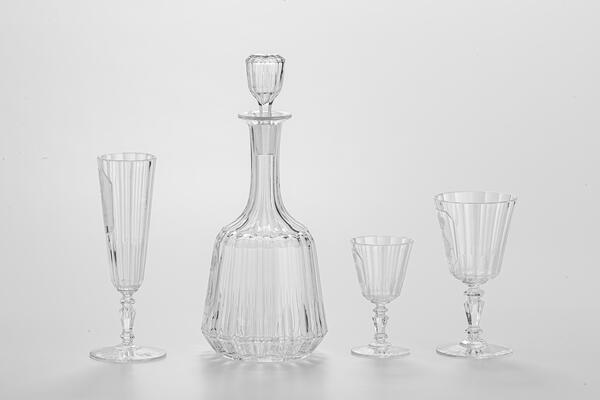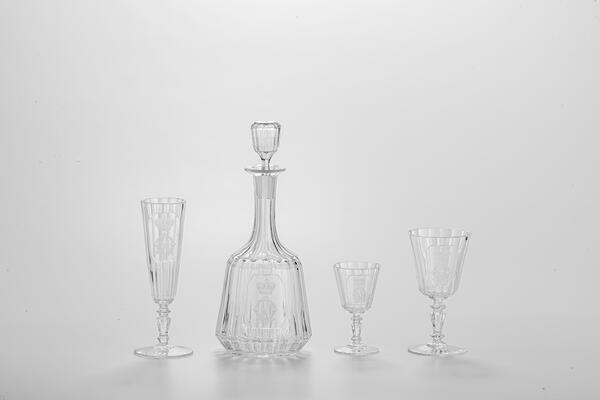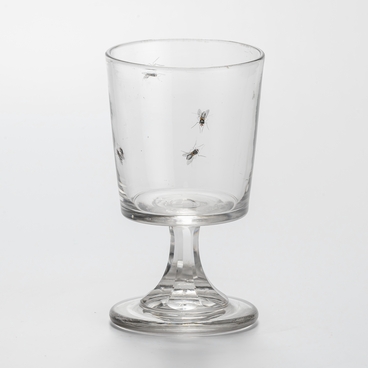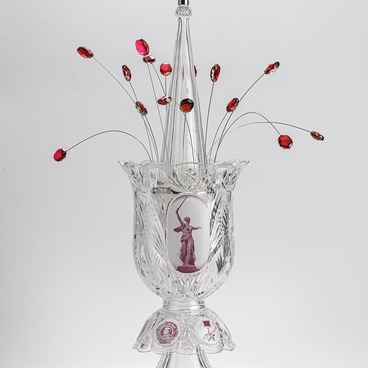Prince Alexander Dmitrievich Obolensky, the last owner of the Nikolsko-Bakhmetevsky plant, headed it from 1884 until his death in 1917. At the time of his management, the collection of European, Russian and factory samples of glass and crystal was significantly expanded. Already in the early 19th century, the enterprise was among the first in Russia to use technical innovations and create highly artistic products. In the second half of the century, the range expanded even more, and the products became more accessible to the general public.
In 1914, on the 150th anniversary of the factory, a record of its history with the documents relating to the Russian glass industry was published. It was called “Nikolsko-Bakhmetevsky Crystal Factory of Prince A.D. Obolensky”.
The book mentions that Bakhmetevsky products are worthy of serving as a model for “all glass manufacturers who seek… not only commercial benefits, but also artistic products that can support the honor and glory of the Russian industry, as the Bakhmetevsky plant has been doing for 150 years, despite many hardships.”
The objects of the service are decorated with a wide facet. This is one of the most complex types of facets, it is especially rigorous and emphasizes the noble purity and transparency of crystal.
A truncated-conical shape of products with a trim at the bottom is harmoniously combined with the wide facet design. The decanter’s shoulders, also trimmed, smoothly extend into a narrow neck. The shape of the glasses is complemented by faceted baluster stems. The body of all four objects is decorated with a rectangular vertical medallion. The corners of the medallion are cut off, and a matte engraving is applied on its even, smooth background: the princely monogram “AO” (Alexander Obolensky) and the crown. Such elements were used to decorate many products of the Bakhmetevsky factory produced at that time.
A fragment of the service presents three different vessels for drinking alcoholic beverages.
In the price lists of Prince Obolensky, glasses or goblets were made for champagne. Glasses of different sizes were intended for red wine, Madeira wine, port wine, vodka, and hock.
In 1914, on the 150th anniversary of the factory, a record of its history with the documents relating to the Russian glass industry was published. It was called “Nikolsko-Bakhmetevsky Crystal Factory of Prince A.D. Obolensky”.
The book mentions that Bakhmetevsky products are worthy of serving as a model for “all glass manufacturers who seek… not only commercial benefits, but also artistic products that can support the honor and glory of the Russian industry, as the Bakhmetevsky plant has been doing for 150 years, despite many hardships.”
The objects of the service are decorated with a wide facet. This is one of the most complex types of facets, it is especially rigorous and emphasizes the noble purity and transparency of crystal.
A truncated-conical shape of products with a trim at the bottom is harmoniously combined with the wide facet design. The decanter’s shoulders, also trimmed, smoothly extend into a narrow neck. The shape of the glasses is complemented by faceted baluster stems. The body of all four objects is decorated with a rectangular vertical medallion. The corners of the medallion are cut off, and a matte engraving is applied on its even, smooth background: the princely monogram “AO” (Alexander Obolensky) and the crown. Such elements were used to decorate many products of the Bakhmetevsky factory produced at that time.
A fragment of the service presents three different vessels for drinking alcoholic beverages.
In the price lists of Prince Obolensky, glasses or goblets were made for champagne. Glasses of different sizes were intended for red wine, Madeira wine, port wine, vodka, and hock.





